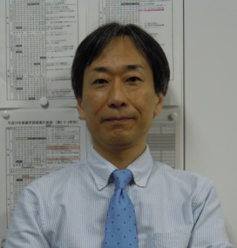
Prof. Yoshihiro Tsukiyama
DDS, PhD; Section of Dental Education, Faculty of Dental Science, Kyushu University, Japan
Dr. Tsukiyama graduated Kyushu University School of Dentistry and proceeded to graduate school in 1987. He engaged in the research on stomatognathic function in the beginning of his career. He went to UCLA School of Dentistry between 1995 and 1997, and conducted researches on temporomandibular disorders (TMD) and orofacial pain. He is now engaging in researches on sleep bruxism, TMD and orofacial pain, occlusal dysesthesia, stomatognathic function, the clinical evaluation of prosthodontic treatment including dental implants, and digital dentistry. He has been serving as officer and committee member of national and international academic societies, including International RDC/TMD Consortium Network of the International Association for Dental Research, International Association for the Study of Pain Special Interest Group on Orofacial Pain, Japan Society of Orofacial Pain, Asian Academy of Craniomandibular Disorders, Japanese Society for the Temporomandibular Joint, Japan Prosthodontic Society, and has been contributing to the development of clinical guidelines. He is currently the Professor at the Section of Dental Education, Faculty of Dental Science, Kyushu University, Fukuoka, Japan
1. Orofacial Pain and Temporomandibular Disorders
According to the fact sheets created by the Special Interest Group on Orofacial Pain (OFP-SIG) in the International Association for the Study of Pain (IASP), orofacial pain was introduced as follows: “The general dentist and dental specialist treat patients with pain on a daily basis. Orofacial pain is pain perceived in the face and/or oral cavity. It is caused by diseases or disorders of regional structures, by dysfunction of the nervous system, or through referral from distant sources. Treatment of orofacial pain is a specialty in dentistry in many parts of the world and an emerging area of specialization in Others.” Orofacial pain covers a broad spectrum of pain disorders such as intraoral pain disorders including odontogenic and non-odontogenic origin, temporomandibular disorders characterized as musculoskeletal problems, vascular and nonvascular intracranial pain disorders, primary headache disorders, neuropathic pain disorders, cervical pain disorders, pain due to extracranial causes, systemic causes or sleep disorders. Hence, profound knowledge is required for the diagnosis and management of orofacial pain. A thorough medical history through the extensive medical interview is considered as most important data that would contribute to reach correct diagnoses of orofacial pain. Structured pain interview can be used to grasp the features of pain such as location, quality, intensity, temporal profile (duration, frequency, etc), aggravating factors, alleviating factors, pain behavior, referral pattern, associated signs and symptoms. Additional diagnostic tests can be done if they are considered as beneficial for patients. The presentation will give an overview of the chronic orofacial pain and temporomandibular disorders. Taxonomy, clinical features, and management of chronic orofacial pain disorders will be focused.
2. Restorative aspects of orofacial pain and temporomandibular disorders
Although complex chronic pain problems in clinical dentistry have been recognized, their clinical features and basic mechanisms are not fully understood. Pain is described as “An unpleasant sensory and emotional experience associated with actual or potential tissue damage, or described in terms of such damage” according to the International Association for the Study of Pain (IASP). As noted by many researches, pain can be driven by not only biological but also psychosocial factors. It is known that comprehensive bio-psychosocial approaches including cognitive behavioral therapy are required for managing chronic orofacial pain disorders like other chronic pain conditions such as chronic low back pain. There are dentists who believe that good function exits in the ideal form and fixing the inappropriate shape into the ideal form can solve the problems. However, this may not apply to patients with chronic orofacial pain disorders. Restorative approaches such as prosthodontic treatments usually require irreversible/invasive procedures such as re-shaping of tooth form (e.g., occlusal adjustment), tooth preparation, placing implants, etc. These procedures often aggravate the conditions by increasing the sensitization of pain for patients with chronic orofacial pain. The presentation will give an insight on the restorative aspects of chronic orofacial pain disorders. Fundamental concepts, clinical features, and management of chronic orofacial pain disorders will be discussed from clinical perspectives using cases.